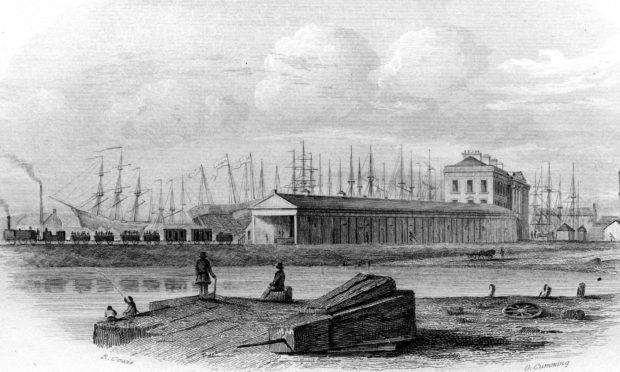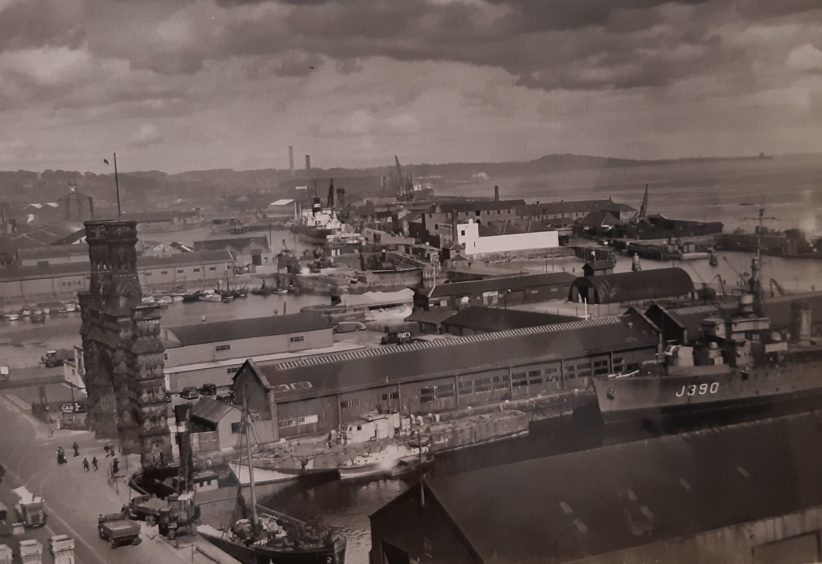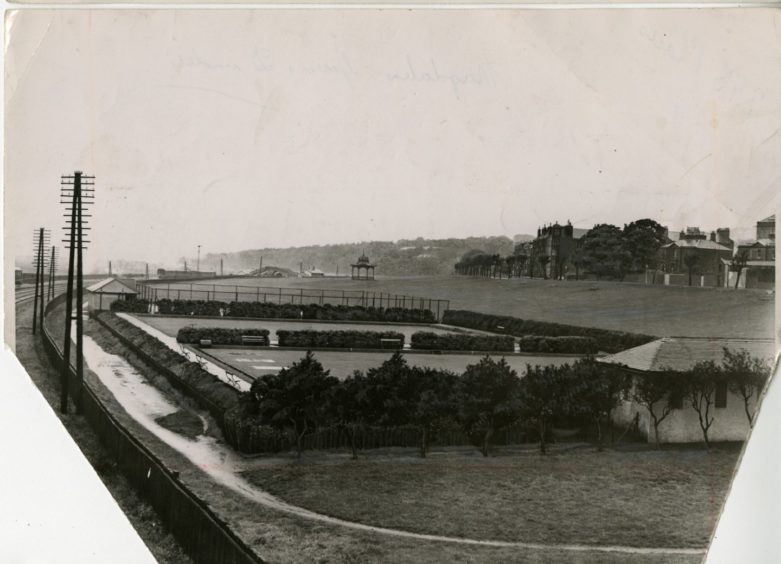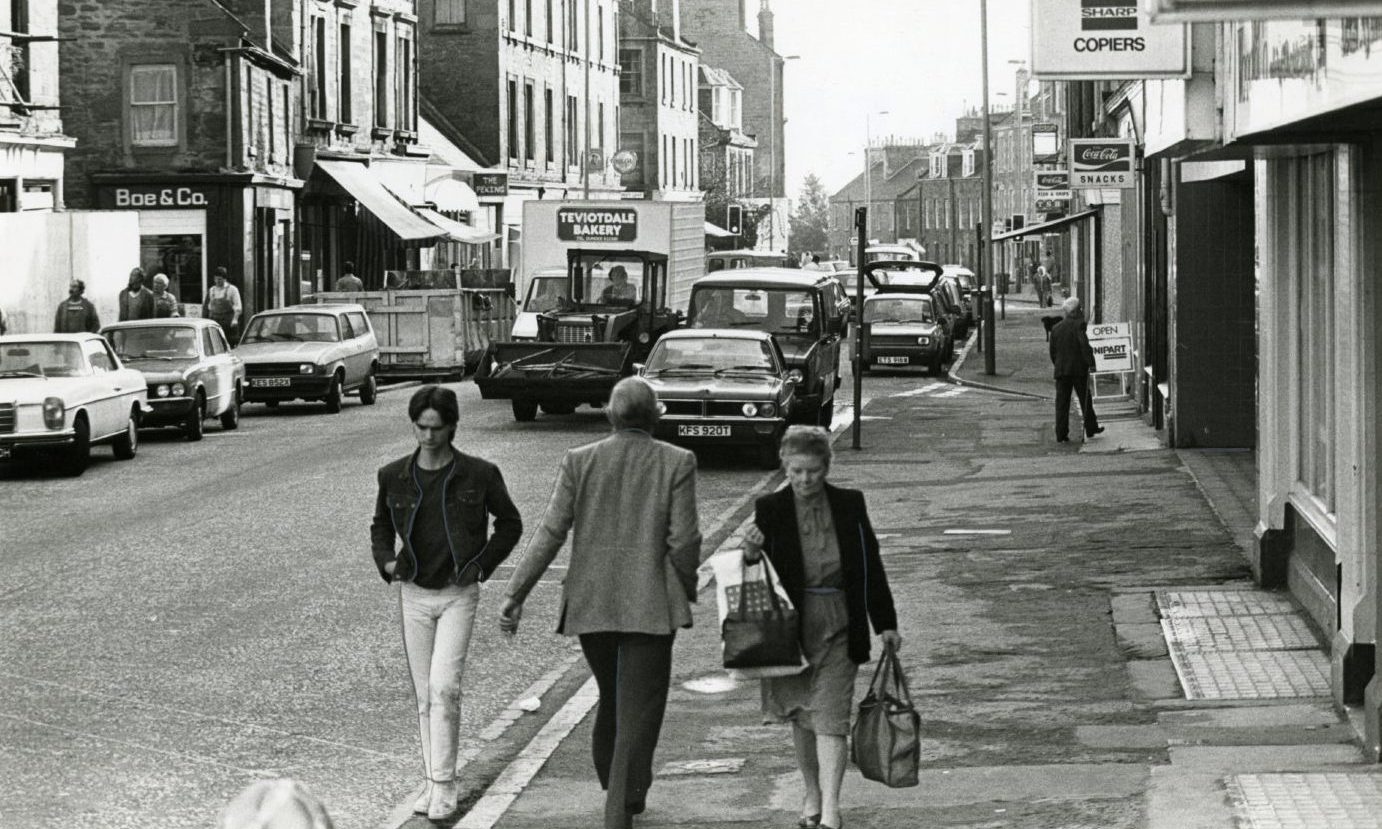It was the railway line which was blamed for bringing “deadly lakes” and the “demon of all uncleanliness” to Dundee’s east end.
The former sea beach between Trades Lane and the Roodyards was hemmed in by the railway embankments and became a noxious cocktail of raw sewage, waste waters from spinning mills, and the refuse of whale blubber.
Opened in 1838, the Dundee and Arbroath Railway Company’s line closely followed the Angus coast but its route into the eastern part of Dundee was along an isolated embankment piled into the intertidal flats of the Tay, two to three hundred yards from the shore, reaching its terminus near the Custom House.
Professor Rob Duck, Emeritus Professor of Environmental Geoscience at Dundee University, said this actually brought huge detriment to those who lived or worked in the area and those who had been accustomed to walking on the pebbly beaches or fishing or bathing – common recreational practices in this part of the town.
The embankment marooned the natural coastline along with the industries, jetties and piers that had developed along it during the late eighteenth and early nineteenth centuries.
“This was the whaling quarter of Dundee but now its piers and blubber boiling yards were cut off from the Tay,” he said.
“Some businesses relocated, others went into liquidation and at a stroke this part of Dundee lost its ancient port character.
“The railway embankment was now delimiting the waterfront.
“What had once been open water behind it became virtually stagnant and fetid, covered with green algal scum and in the summer months infested by a swarm of venomous insects.
“Proprietors and residents at the east end of Dundee petitioned the Town Council, the Harbour Trustees and the Railway Directors.”
By 1845 the situation was so bad that numerous letters appeared in The Courier, describing what became known as ‘the Dock Street Nuisances’ for instance: “I refer to what was formerly the sea beach between Trades Lane and the Roodyards.
“This place is totally different now to what it once was, on account of its being wholly hemmed in by the railway embankments.
“It is a fact beyond dispute that this place is now the very receptacle of all the filth and contents of the common sewers of the eastern district of the town, and strange to say no adequate provision seems to be made for carrying it out into the river.
“The only place discoverable for this purpose is a small aperture across the railway, and to all appearance even this will soon be choked up, as the embanking of Dock Street is already within a few yards of it, and no appearances of preparations are making either for the outlet of stagnant water from this place, or inlet of fresh water from the river.
“A few years ago, this place, with its salubrious air, beautiful banks, pebbled bottom and limpid waters, formed an agreeable and healthy retreat both to the philosopher and the humble artisan; but now it is converted into stagnant pools and deadly lakes.
“It must be apparent to everyone, that, from the vast quantities of putrid animal and vegetable matter daily deposited in this place, in a very short time its pestilential miasmata will contaminate the atmosphere, and generate disease and death in this densely crowded neighbourhood in the first instance, and will spread its ravages with the rapidity of lightning far and wide.
“It is a wise maxim that it is easier to prevent disease than to cure it.
“It must be remembered that the origin of the last great plague in London, which carried off upwards of up to 68,000 victims, was generally attributed to the accumulation of filth in that city.
“If no one considers it to be a duty to look after the thing now complained of, let the public at large, in a meeting assembled for the purpose, lay the matter before parliament, so that the public health may not be endangered.”
Professor Duck said it is hardly surprising that a noxious cocktail of raw sewage, waste waters from spinning mills and the refuse of whale blubber that had previously discharged or soaked away directly into the Tay accumulated as the inadequate culverts became choked.
He said: “One of the pools of about eight acres in area was connected to the Tay via only a single iron pipe.
“Little wonder that the stink became unbearable and many Dundonians blamed the pools as a cause of disease as ‘fever was raging’ in the town at that time.”
A lecture at the Watt Institution drew attention to the high rate of mortality arising from stagnant pools of water, “an evil”, as stated by the speaker, a Mr Maxwell, “very prevalent in Dundee”.
Furthermore numerous calls were made for the infill of the pools altogether or sufficient openings made for the free ingress and egress of fresh water, so as to scour these pools properly at every tide from all dangerous depositions which have been accumulating.
Two serious waves of endemic fever had accented the need for improved sanitation everywhere and Dundee had suffered particularly badly in the typhus epidemic of 1847 and in the cholera outbreak of 1849.
The Dundee Advertiser carried a leader on the subject: “We suppose we may now conclude that cholera has left this town for a time, although it still prowls in our neighbourhood, and, in particular instances, commits fatal ravages.
“It left us as it came to us – in mystery.
“A mystery it is likely to remain.
“Physicians seem to be as much at a loss for a cure to the disease as chemists for a cause.
“In the absence of medical and scientific information, therefore, men have begun to apply common sense to the subject, and they have thought it a safe conclusion to arrive at that, what generates and fosters other pestilential diseases will, in all likelihood, aid and assist the generation and propagation of cholera; and on this conclusion they are acting.
“War has been declared against filth, in all its localities and in all its forms; and a formidable war it is likely to be.
“It is long since we met an enemy which has stood its ground so well. In the long run, however, the cause of cleanliness must conquer. Every day some important victory is gained; but there are some strong positions in the hands of the enemy, from which it seems almost impossible to dislodge him, and in our own locality there is one which we have begun to think impregnable.
“We need not say that we allude to the fields of the Dock Street nuisances.
“For years they have remained the almost undisturbed possession of the demon of all uncleanliness.
“Often has he been challenged and railed at and threatened.
“We have told the Lord Advocate about him; the Dundee physicians have denounced him in the most indignant language of science; the Commissioner of Wood and Forests have been specially applied to for his destruction; but all in vain; there he continues to stink among his accumulating abominations, and how long he may continue no one can tell.
“Another attempt was, however, made a few days ago.
“The Harbour Trustees have determined to bring up the directors of the Dundee and Arbroath Railway so far as they are concerned with the existence of the evil.
“They are to be forced to remove certain encumbrances in the way of all improvement, and we do think they have been tolerated far too long.
“There is surely nothing impossible in the total removal of these pestilential pools.
“Before another summer’s sun lend its heat to develop their pernicious elements, we do hope that some great change will have been effected.
“Let the thing be done out and out and not a vestige of the filthy mass left to poison the surrounding atmosphere.”
A sub-committee of the Harbour Trustees was appointed to investigate the matter and it recommended that the pool near to the terminus of the Arbroath railway line should be filled up and “the eye for letting in fresh water to the second being put in better order”.
Professor Duck said: “This eventually, once it was agreed that this was to be at the expense of the Harbour Trustees, took place in stages resulting in the creation of more but smaller pools which progressively became concentrators of stagnant effluent – so the situation got worse before it got better!
“This land claim from the Tay was inevitable – these hotspots of pollution and malodour simply had to be obliterated, with proper drainage through the claimed land to permit sewage to exit into the tidal waters.
“In the early 1840s there was no more fashionable place to reside in Dundee but in one of the detached, classical villas; south-facing along the riverfront suburb of Magdalen Green.
“Here the foreshore was an area popular for walking, bathing, swimming, fishing and taking the air.
“The Dundee and Perth Railway Company, however, cared nothing about such prosperous rural idyll and had plans for their line.”
Members of Dundee’s Guildry were seriously concerned about the proposals, noting that: “One railway had destroyed the privilege of bathing to the eastward of the town, and it would be a thousand pities that another should be allowed to do the same westward.”
Professor Duck said filling in the pools worked along with proper drainage through the embankment and the line is still in the same place today.
He said: “Exactly the same thing happened to the west when the railway was built from Perth – another big stink!”















